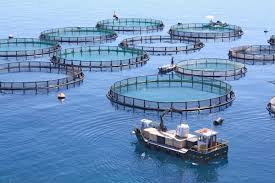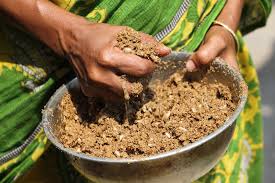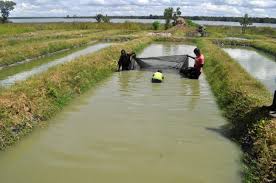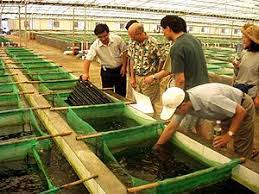Fish farming techniques refer to the various methods and practices used to cultivate fish and other aquatic organisms in controlled environments. This growing sector, also known as aquaculture, plays a crucial role in meeting the global demand for seafood while promoting sustainable practices.
As the world’s population continues to expand, the pressure on wild fish stocks has intensified, prompting the need for effective fish farming techniques to ensure food security and environmental balance.
At its core, fish farming encompasses the breeding, rearing, and harvesting of fish in various water environments, such as freshwater, brackish water, and marine settings. These techniques can vary significantly depending on the species being cultivated, local climate conditions, and available resources.
They can be broadly categorized into extensive, semi-intensive, and intensive systems. Each of these methods has unique characteristics, advantages, and challenges, making it essential for fish farmers to select the most suitable approach for their specific circumstances.
Extensive aquaculture relies on natural water bodies, such as ponds, lakes, and rivers, where fish are allowed to grow with minimal human intervention. This method often depends on the natural food supply in the environment, making it less costly but potentially less efficient in terms of production. Extensive systems are typically suitable for small-scale operations and can support species like tilapia and catfish, which thrive in diverse conditions.
Semi-intensive aquaculture strikes a balance between extensive and intensive methods. In this approach, farmers enhance fish growth by supplementing natural food sources with artificial feed and utilizing aeration and fertilization techniques to improve water quality and nutrient levels.
Semi-intensive systems allow for higher stocking densities and better fish growth rates compared to extensive methods while still being manageable for small to medium-sized operations. This technique is often used for fish like carp and shrimp, where environmental management plays a vital role in overall productivity.
Intensive aquaculture represents the most advanced fish farming technique, characterized by high stocking densities, controlled feeding regimes, and close monitoring of environmental conditions. This method often involves the use of recirculating aquaculture systems (RAS), which allow for efficient water management and waste reduction.
While intensive systems can yield significant fish production in a limited space, they require substantial investment in technology, infrastructure, and management expertise. Species commonly farmed using intensive techniques include salmon, trout, and various high-value marine fish, which have high market demand.
Innovations in fish farming techniques are continually evolving, driven by advancements in technology, research, and sustainability practices. Techniques such as biofloc technology, aquaponics, and integrated multi-trophic aquaculture (IMTA) are gaining popularity, allowing farmers to produce fish while minimizing environmental impact and maximizing resource efficiency. These modern methods not only enhance productivity but also help in addressing concerns related to overfishing and habitat degradation.
Understanding the various fish farming techniques is essential for anyone interested in aquaculture, whether they are aspiring fish farmers, researchers, or consumers. By adopting appropriate practices and innovations, fish farming can contribute significantly to global food security, provide livelihoods for millions, and promote the sustainable use of aquatic resources.
As the industry continues to grow, embracing diverse farming techniques will be crucial for ensuring a balanced and resilient aquaculture sector that meets the needs of future generations.
Types of Fish Farming Systems

Different fish farming systems can cater to various species and production goals. Here are some common types:
1. Pond Systems: These are shallow water bodies used for raising fish. They are the most traditional and commonly used systems for fish farming. Ponds can be natural or man-made, and they rely on natural food sources and supplemental feeding.
2. Cage Systems: In this system, fish are raised in cages or nets placed in lakes, rivers, or coastal waters. Cage farming allows for more efficient use of water bodies and can support higher stocking densities.
3. Recirculating Aquaculture Systems (RAS): This modern system involves a closed-loop environment where water is continually filtered and reused. RAS provides precise control over water quality and conditions, making it suitable for various fish species, including high-value fish.
4. Flow-Through Systems: In this method, water flows continuously through tanks or raceways where fish are kept. This system relies on fresh water sources and is often used for species that require high levels of oxygen.
5. Integrated Multi-Trophic Aquaculture (IMTA): This system combines different species from various trophic levels, such as fish, shellfish, and plants, to create a balanced ecosystem. IMTA enhances resource efficiency and reduces environmental impacts.
Site Selection for Fish Farms
Choosing the right site for your fish farm is critical for ensuring the success and sustainability of your operation. Here are key factors to consider:
1. Water Source: Ensure access to a reliable water source, such as a river, lake, or well. The quality and quantity of water should be suitable for the species you plan to farm.
2. Land Characteristics: Evaluate the land’s topography, soil type, and drainage. Flat or gently sloping land is preferable for pond construction. Avoid areas prone to flooding or contamination.
3. Proximity to Markets: Consider the location’s proximity to markets and transportation networks. Being close to your customer base can reduce transportation costs and ensure fresh products.
4. Environmental Impact: Assess the potential environmental impact of your fish farm. Consider local ecosystems, wildlife habitats, and regulations regarding land use and water management.
5. Regulatory Compliance: Familiarize yourself with local regulations and permits required for fish farming. Compliance with legal requirements is crucial for operating sustainably and avoiding fines.
Water Quality Management
Maintaining high water quality is essential for the health and growth of your fish. Here are critical aspects of water quality management:
1. Monitoring Water Parameters: Regularly test water parameters, including temperature, pH, dissolved oxygen, ammonia, nitrite, and nitrate levels. These parameters influence fish health and growth rates.
2. Oxygen Management: Ensure adequate dissolved oxygen levels (above 5 mg/L) in the water. Use aeration systems or oxygenators if necessary, especially in high-density farming systems.
3. Nutrient Management: Control nutrient levels to prevent water pollution and eutrophication. Regularly remove excess feed and waste, and consider using biofilters to help manage nutrient loads.
4. Temperature Control: Maintain optimal water temperatures for the specific fish species you are farming. Implement measures such as shading or heating systems to regulate temperature fluctuations.
5. Water Source Quality: Use clean, untreated water for fish farming. If using surface water, be aware of potential pollutants from runoff, and consider using water filtration or treatment systems.
Read Also: 17 Medicinal Health Benefits Of Morus alba (White Mulberry)
Feeding Practices in Fish Farming

Proper feeding practices are crucial for the growth and health of farmed fish. Here are key considerations:
1. Nutritional Requirements: Understand the specific nutritional needs of the fish species you are farming. Different species have varying requirements for proteins, fats, vitamins, and minerals.
2. Feed Types: Choose appropriate feed types, including pellets, flakes, or live feed. High-quality feed enhances growth rates and overall health.
3. Feeding Frequency: Develop a feeding schedule based on the fish’s growth stage. Young fish may require more frequent feeding than adults. Monitor fish behavior to adjust feeding amounts.
4. Feeding Methods: Employ various feeding methods, such as broadcast feeding or using automatic feeders, to ensure uniform distribution of feed and minimize waste.
5. Monitoring Growth: Regularly assess fish growth to adjust feeding practices as needed. Conduct feed conversion ratio (FCR) calculations to evaluate the efficiency of your feeding strategy.
Breeding Techniques in Fish Farming
Effective breeding techniques are essential for maintaining healthy fish populations and improving stock quality. Here are important practices:
1. Selective Breeding: Use selective breeding to enhance desirable traits, such as growth rate, disease resistance, and reproductive performance. Choose parent fish with the best characteristics for breeding.
2. Controlled Breeding: Implement controlled breeding techniques, such as inducing spawning in a hatchery environment. This allows for better management of breeding conditions and outcomes.
3. Natural Breeding: In some systems, natural breeding can occur by allowing fish to spawn in ponds or tanks. This requires careful monitoring of breeding behaviors and environmental conditions.
4. Genetic Management: Maintain genetic diversity in your fish populations to promote overall health and resilience. Avoid inbreeding by introducing new breeding stock periodically.
5. Hatchery Management: Establish a hatchery for rearing fry and fingerlings. Ensure optimal conditions for hatching and growing young fish to improve survival rates.
Disease Management and Prevention
Effective disease management is vital for maintaining fish health and ensuring a successful harvest. Consider these practices:
1. Biosecurity Measures: Implement biosecurity protocols to prevent disease introduction. This includes controlling access to farms, disinfecting equipment, and monitoring wildlife interactions.
2. Health Monitoring: Regularly check fish for signs of illness or stress. Early detection of disease symptoms can prevent outbreaks and minimize losses.
3. Vaccination: Vaccinate fish against common diseases where applicable. Vaccination can significantly reduce disease incidence and improve fish survival rates.
4. Water Quality Management: Maintain optimal water quality to reduce stress and susceptibility to diseases. Regularly monitor water parameters and adjust as necessary.
5. Treatment Protocols: Develop and follow treatment protocols for common fish diseases. This may include medications, therapeutic baths, or environmental modifications.
Harvesting Techniques
Harvesting fish at the right time and using proper techniques are crucial for maximizing yield and quality. Here are key points:
1. Timing of Harvest: Monitor growth rates and market demands to determine the optimal time for harvest. Harvest fish when they reach the desired size for sale or consumption.
2. Harvesting Methods: Choose appropriate harvesting methods based on your farming system. Common techniques include netting, trapping, or draining ponds.
3. Handling Practices: Handle fish carefully during harvesting to minimize stress and injury. Use wet hands or gloves to prevent damaging the fish’s skin and slime coating.
4. Post-Harvest Processing: Ensure proper post-harvest processing to maintain quality and safety. This may include cleaning, gutting, and chilling fish immediately after harvest.
5. Record Keeping: Maintain accurate records of harvest quantities and fish sizes. This information is useful for assessing production efficiency and planning future crops.
Read Also: 16 Medicinal Health Benefits Of Eugenia calycina (Brush Cherry)
Sustainable Practices in Fish Farming

Implementing sustainable practices in fish farming helps preserve aquatic ecosystems and ensures the long-term viability of fish production. Here are essential practices to consider:
1. Responsible Sourcing: Choose sustainable feed sources, such as plant-based proteins or by-products from other industries, to reduce reliance on wild fish stocks. This practice helps conserve marine resources.
2. Eco-Friendly Systems: Utilize integrated multi-trophic aquaculture (IMTA), where different species are farmed together. This system can enhance resource efficiency and reduce waste, as different species can utilize the by-products of others.
3. Habitat Preservation: Protect natural habitats around fish farms. Avoid practices that lead to habitat destruction, such as inappropriate pond placement or waterway alteration.
4. Water Management: Implement water conservation techniques, such as recirculating aquaculture systems (RAS), which reuse water and minimize discharge. Regularly monitor and manage water quality to reduce pollution and conserve resources.
5. Waste Management: Develop waste management strategies to recycle waste products and minimize environmental impact. Techniques may include composting organic waste or utilizing biofilters to treat water.
Economic Considerations in Fish Farming
Economic sustainability is crucial for the success of fish farming operations. Here are key economic considerations:
1. Cost Analysis: Conduct a comprehensive cost analysis to determine the financial feasibility of fish farming. Consider all expenses, including feed, equipment, labor, and maintenance.
2. Market Demand: Research market trends and consumer preferences to align production with demand. Understanding market needs can help in selecting fish species and determining optimal harvest times.
3. Profit Margins: Assess profit margins by analyzing production costs versus selling prices. Identify strategies to reduce costs and increase profitability, such as optimizing feeding practices and minimizing waste.
4. Investment and Financing: Explore funding options, including grants, loans, or partnerships, to secure the necessary capital for starting or expanding a fish farming operation.
5. Diversification: Consider diversifying fish farming operations by introducing different species or value-added products, such as processed fish, to spread risk and enhance revenue streams.
Regulations and Licensing for Fish Farms
Compliance with regulations and obtaining necessary licenses is essential for operating a fish farm legally and sustainably. Here are important points to consider:
1. Local Regulations: Familiarize yourself with local laws and regulations governing fish farming. These may include zoning laws, water usage permits, and environmental protection regulations.
2. Licensing Requirements: Obtain the required licenses for operating a fish farm. This may include aquaculture permits and health inspections to ensure compliance with safety standards.
3. Environmental Impact Assessments: Conduct environmental impact assessments (EIAs) to evaluate potential effects on local ecosystems and develop mitigation plans as necessary.
4. Best Practices Guidelines: Follow best practices guidelines set by government agencies or industry associations. These guidelines may cover water quality management, feeding practices, and disease prevention.
5. Record Keeping: Maintain detailed records of production, sales, and compliance with regulations. Proper documentation is essential for audits and inspections.
Do you have any questions, suggestions, or contributions? If so, please feel free to use the comment box below to share your thoughts. We also encourage you to kindly share this information with others who might benefit from it. Since we can’t reach everyone at once, we truly appreciate your help in spreading the word. Thank you so much for your support and for sharing!

